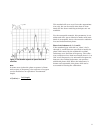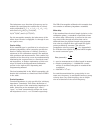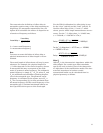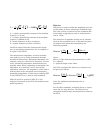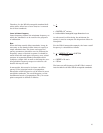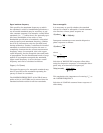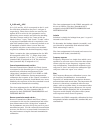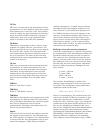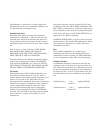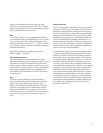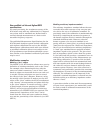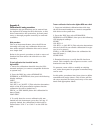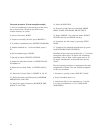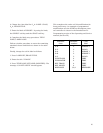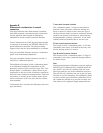
19
TRL Thru
TRL Thru corresponds to the measurement of the
S-parameters of a zero-length or short thru connec-
tion between port 1 and port 2. The Thru, Reflect
and Line classes are used exclusively for the three
steps of the TRL 2-PORT calibration. Typically, a
“delay/thru” with zero (or the smallest) Offset
Delay is specified as the TRL Thru standard.
TRL Reflect
TRL Reflect corresponds to the S
11
and S
22
meas-
urement of a highly reflective 1-port device. The
Reflect (typically an open or short circuit) must be
the same for port 1 and 2. The reflection coeffi-
cient magnitude of the Reflect should be close to 1
but is not specified. The phase of the reflection
coefficient need only be approximately specified
(within ± 90 degrees).
TRL Line
TRL Line corresponds to the measurement of the
S-parameters of a short transmission line. The
impedance of this Line determines the reference
impedance for the subsequent error-corrected
measurements. The insertion phase of the Line
need not be precisely defined but may not be the
same as (nor a multiple of pi) the phase of the
Thru.
TRM Thru
Refer to “TRL Thru” section.
TRM Reflec
Refer to “TRL Reflec” section.
TRM Match
TRM Match corresponds to the measurement of the
S-parameters of a matched load. The input reflec-
tion of this Match determines the reference imped-
ance for the subsequent error-corrected
measurements. The phase of the Match does not
need to be precisely defined.
Adapter
This class is used to specify the adapters used for
the adapter removal process. The standard num-
ber of the adapter or adapters to be characterized
is entered into the class assignment. Only an esti-
mate of the adapter’s Offset Delay is required
(within ± 90 degrees). A simple way to estimate
the Offset Delay of any adapter would be as fol-
lows. Perform a 1-port calibration (Response or
S
11
1-PORT) and then connect the adapter to the
test port. Terminate the adapter with a short cir-
cuit and then measure the Group Delay. If the
short circuit is not an offset short, the adapter’s
Offset Delay is simply
l
/2 of the measured delay.
If the short circuit is offset, its delay must be sub-
tracted from the measured delay.
Modifying a cal set with connector compensation
Connector compensation is a feature that provides
for compensation of the discontinuity found at the
interface between the test port and a connector.
The connector here, although mechanically com-
patible, is not the same as the connector used for
the calibration. There are several connector fami-
lies that have the same characteristic impedance,
but use a different geometry. Examples of such
pairs include:
3.5 mm / 2.92 mm
3.5 mm / SMA
SMA / 2.92 mm
2.4 mm / 1.85 mm
The interface discontinuity is modeled as a
lumped, shunt-susceptance at the test port refer-
ence plane. The susceptance is generated from a
capacitance model of the form:
C=C
0
+ C
1
ϫ f + C
2
ϫ f
2
+ C
3
ϫ f
3
where f is the frequency. The coefficients are pro-
vided in the default Cal Kits for a number of typi-
cally used connector-pair combinations. To add
models for other connector types, or to change the
coefficients for the pairs already defined in a Cal
Kit, use the “Modifying a Calibration Kit” proce-
dure in the “Calibrating for System Measurements”
chapter of the 8510 network analyzer systems
Operating and Programming Manual (part number
08510-90281). Note that the definitions in the
default Cal Kits are additions to the Standard
Class Adapter, and are Standards of type “OPEN.”



